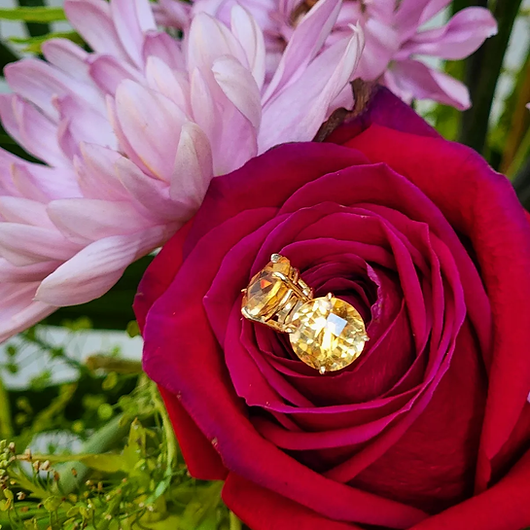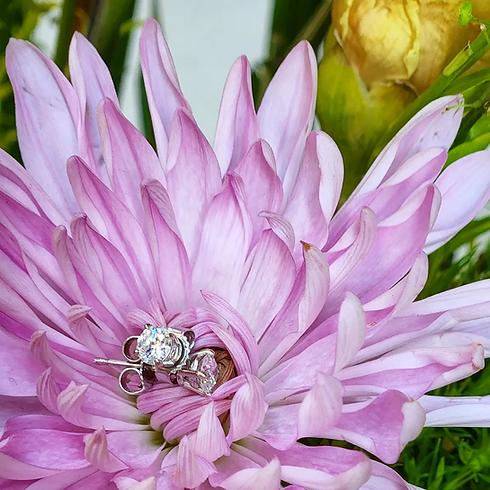

Our Mission
Quality That Endures
Imagine a jewelry store that feels comfortable selling a 7ct. diamond and on the same day fixing a special plastic necklace for a special little girl. When Charles and Georgiann started their business over 40 years ago, they brought with them a tradition of respect for customers and their jewelry. This respect isn't predicated by the market value of the jewelry but the value of the jewelry to our customer.
Gemstones 101
Understanding your Stone
At Beaudet Jewelry we not only want to help you find your perfect stone, we also want to educate you on what sets our gems above the rest. We will take the time to sit down with you and explain what makes your stone unique; from carat, to clarity, to cut, to color. The Gemological Institute of America (GIA) was formed as a training school for gemologists and jewelers. Color and clarity are graded using standards under strict lighting, magnification and measurement. Both GIA and the American Gem Society (AGS) have concluded 10-year studies on diamond proportion, symmetry, polish and light handling, which in aggregate we call the cut. We use these resources to provide absolute transparency to our customers to ensure complete satisfaction with their handmade jewelry!
.png)
Color
Approximately 50% of a gemstone's value is related to its color. Color in a colored gemstone is graded by saturation/intensity, tone (how light or dark it is) and hue (purity of color). Most stones have at least one modifying color; such as yellow, we grade the modifying colors for rarity and beauty. For example, a blue sapphire with a slight yellow or greenish tint is considerably less rare and expensive than one modified with violet. In some cases it helps determine where the stone was mined, which also might effect value. You do not need to understand this perfectly to buy a fine gemstone, but make sure to choose a color you'll enjoy today and ten years from today.

Cut
Cut is graded more loosely on colored stones than on a diamond, where proportions and symmetry are critical for peak brilliance. Colored stones are graded with more tolerance for shape using outline balance and length x width x depth ratios. The grading will take into consideration bulge, table percentage and girdle thickness. The polish will be described as finish and will take into account the polish surface, the arrangement of the facets as well as their shape and number. The fact is these really are generalized, unless you are grading a top color and or clarity gemstone.

Clarity
The color grading system most commonly used today grades clarity with the same terminology as diamonds. It uses also however a type system that classifies each gemstone by type. A type 1 stone is one that normally comes eye clean such as aquamarine. A type 2 is one that has very slight variations to the eye such as a veil or thumbprint inclusion which you might not be able to focus on but affects the light as it travels through it. A type 3 stone normally comes heavily included such as Emerald. Clarity is relative to the type of stone, as some stones come crystal clear while others are normally silky or cloudy looking.

